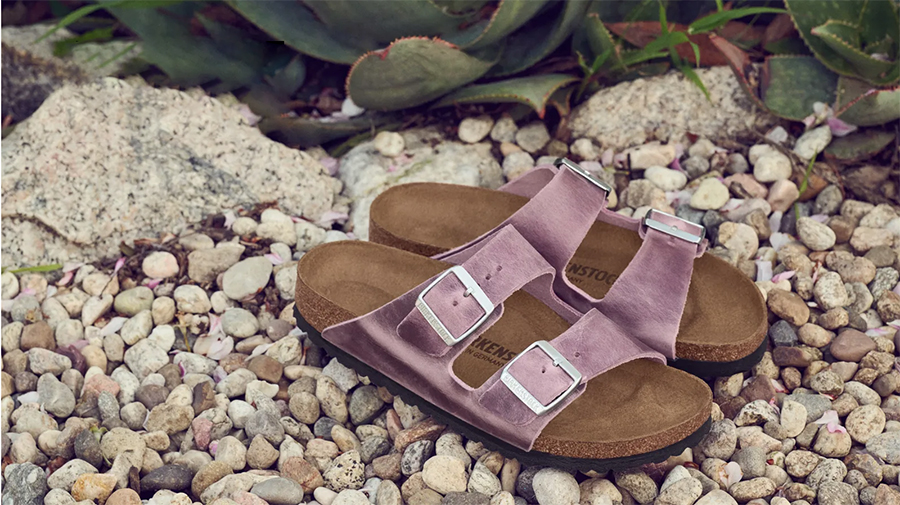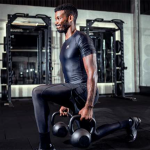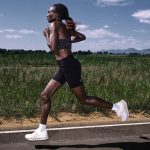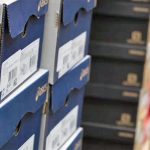In its initial public offering (IPO) prospectus, Birkenstock said it sees “ample whitespace to continue growing the Birkenstock brand” by raising brand awareness, production capacity expansion, core and new product portfolio innovation, and a continued DTC shift. However, a large part of its focus will be on extending its successful “engineered distribution model” pioneered in the U.S. to other regions.
The filing shows revenues took off since the Birkenstock family brought in its first outside management team just over a decade ago. The company is now led by Oliver Reichert, who became general manager in 2009 and CEO in 2013.
The Germany-based company, founded in 1774, wrote in the prospectus, “We have transformed our business from a family-owned, production-oriented company into a global, professionally managed enterprise committed to growing our brand.” Global revenues have grown at a CAGR (compound annual growth rate) of 20 percent to €1.24 billion ($1.3 bn) in FY22 from €292 million FY14. Birkenstock’s fiscal year ends in September.
Engineered Distribution Model
Under its “engineered distribution model,” Birkenstock accelerated its DTC expansion while reducing its wholesale presence to strategic partners who support Birkenstock’s brand positioning and converting third-party distributors to owned distribution.
Birkenstock said the model provides the brand with better control over distribution and better manages inventory and pricing, including helping to grow its share of closed-toe and other high ASP (average selling price) products. The control also helps better create and maintain “scarcity” around product to ensure demand stays higher than supply.
“Given the increasing relevance and strength of our brand, demand for our products has historically exceeded supply,” stated Birkenstock. “As a consequence, we have spent the past decade refining our engineered distribution model through which we mindfully and strategically allocate product across channels and regions.”
This includes guiding the “strategic allocation and product segmentation process, often down to the single door level, to ensure we sell the right product in the right channel at the right price point,” according to the prospectus.
Overall, DTC revenues have grown at a 42 percent CAGR between 2018 and 2022, expanding from 18 percent of revenues in FY18 to 38 percent in FY22. Future DTC growth is expected to be primarily driven by e-commerce, which is rapidly growing due to active customer growth and new website launches across countries. In FY22, e-commerce represented 89 percent of DTC revenues with owned e-commerce sites reaching more than 30 countries.
Birkenstock has approximately 45 owned stores, 20 of which are in Germany. Store expansion recently accelerated with openings in Soho and Brooklyn in New York City, Venice Beach in Los Angeles, Tokyo, London, and Delhi.
DTC penetration is forecasted to increase slightly as DTC growth is balanced with continued expansion with new and existing strategic wholesale partners globally.
Wholesale Distribution Narrows To Strategic Partners
Birkenstock described its wholesale focuses on “strategic accounts that support our brand positioning and reach” with line availability segmented into specific retailer quality tiers, including reserving the premium 1774 range to select partners.
“For our wholesale partners, we are a ‘must carry’ brand based on the enthusiasm with which our consumers pursue our products,” Birkenstock wrote in its prospectus. “We believe that the Birkenstock brand is consistently amongst the top performers in sell-through in our core categories at most of our retail partners. We generate significantly more demand from existing and prospective wholesale customers than we can supply, putting us in an enviable position where we can create scarcity in the market and obtain consistently favorable economic terms on wholesale distribution.”
Building on its success in the U.S., distribution was taken back in key markets, including the U.K., France, Canada, Japan, and South Korea, reducing the share of business in third-party distribution from 32 percent of revenues in FY18 to 14 percent in FY22.
The engineered distribution model was pioneered in the U.S., helping drive 32 percent revenue in the region on a CAGR basis between FY14 and FY22, and has also found success in Europe. Overall, Birkenstock’s “strongest, most developed regions” are the Americas and Europe, which represented 54 percent and 36 percent of revenues in FY22, respectively.
Birkenstock believes it has “extensive whitespace to grow within and outside of our largest geographies, the U.S. and Europe.” The UK, France, Southern Europe and Canada were cited in the prospectus as “significantly underpenetrated” markets.
Targeted investments are also planned to drive growth in South Korea, Australia and New Zealand, where Birkenstock has some presence, as well as in China and India, where the brand has minimal distribution. Growth in the APMA region, making up 10 percent of revenues, has been constrained by “deliberate decisions to prioritize the Americas and Europe due to finite supply.”
“Celebrate The Archive, Build The Archive”
Beyond extending its engineered business model beyond the U.S. and Europe, growth drivers include fueling innovation through a “celebrate the archive, build the archive” production approach.
Five silhouettes, including Madrid, Arizona, Boston, Gizeh and Mayari, collectively generated nearly 76 percent of revenues in FY22. Continuing to “reinterpret or ‘celebrate’ these timeless, iconic silhouettes” through new colors, materials and other details, including buckles, is expected to “drive consistent, recurring growth with minimal risk.” For instance, with extensions across price points and usage occasions, including a water-friendly variant utilizing EVA, revenues from the Arizona silhouette have grown at a CAGR of 24 percent between fiscal 2018 and 2022. From FY18 to FY22, the five core silhouettes have grown at a revenue CAGR of 18 percent.
“Building the Archive” focuses on developing new silhouettes for Birkenstock’s famed footbed. Nine of the brand’s Top 20 products in FY22 included new styles introduced since FY17. In particular, the company focused on expanding closed-toe silhouettes, which represented over 20 percent of revenues in FY22 and helped balance seasonality since they could be worn in colder months.
Examples of potential underpenetrated categories include the recent development of water-friendly and high-grip outsoles via PU direct injection technology. The use of EVA also expands Birkenstock’s ability to create products suited for use in and around water. Birkenstock wrote in its prospectus, “These developments broaden our potential product range across usage occasions by creating highly functional, water ready, anti-slip outsoles and more rugged constructions.”
Outside footwear, Birkenstock will launch a prestige shoe care and footcare line and a range of sleep systems.
Birkenstock also cited its vertical integration as a competitive advantage. Over 95 percent of products are assembled and 100 percent of footbeds are produced in five owned factories in Germany. Reichert wrote in a shareholder’s letter in the prospectus, “We ensure that every product meets our non-negotiable quality standards and while we embrace automation, we also know that a final human touch is essential when employing natural ingredients, which have their own imperfections.”
Enduring Secular Trends
Birkenstock noted in its prospectus that the brand has tended to attract “independent thinkers and transcended prevailing style norms” that have appealed to select groups over generations, but a wide number of trends are currently working in favor of the brand.
Birkenstock wrote, “In the 1960s and 1970s, the global peace movement and hippies adopted Birkenstock, wearing our Madrid, Arizona and Boston, as part of their celebration of freedom and free-spiritedness. In the 1980s, the green movement adopted Birkenstock, proudly wearing our products for our ethical approaches to production and consumption. In the 1990s, inspired by the feminist movement, more women wore Birkenstock to free themselves from long-standing fashion norms that required wearing painful high heels and other constricting footwear. Today, consumers turn to Birkenstock in their search for healthy, high-quality products and as a rejection of formal dress culture.”
Among the current trends, Birkenstock is seen as a healthier footwear option as consumers are becoming increasingly aware of the negative effects of wearing unsupportive footwear. According to the ARRIS Composites survey cited in the prospectus, nearly two in five U.S. workers have recurring foot pain and discomfort at any given time. In addition, the survey shows that 86 percent of U.S. workers prefer comfort over style in their footwear. Birkenstock wrote, “Our footbed-based products meet inherent consumer demand through their functionality and encouragement of the natural walking motion and proper foot health.”
Birkenstock also believes that similar to the ongoing shift towards casual dress and the rise of sneaker culture, the brand is benefiting from broader casualization trends. Similarly, Birkenstock believes it’s benefiting from a “breakthrough of modern feminism” as women increasingly seek out functional apparel and footwear. Women are 72 percent of Birkenstock’s customer base.
Finally, Birkenstock sees consumers’ increasing to focus on quality, durability, tradition, and purpose aligning around Birkenstock. The prospectus stated, “We believe Birkenstock’s functional, purpose-led brand, uncompromising commitment to quality and centuries-old crafting traditions align well with the ongoing shift towards brands with authentic heritage and craftsmanship.”
Strong Word-of-Mouth
Birkenstock said consumers “become evangelists for our brand when they become aware of the merits of our superior functional design” of its footbeds and word-of-mouth is expected to continue to be a core growth driver. The prospectus states, “As described by our Chief Executive Officer, Oliver Reichert, ‘Consumers buy our products for a thousand wrong reasons, but they all come back for the same reason’: for our functional proposition, enduring commitment to quality and the rich tradition of our company which enables us to establish meaningful emotional connections with our consumers.”
Birkenstock pointed to survey findings that show the average Birkenstock consumer in the U.S. owns 3.6 pairs currently. In the same survey, nearly 90 percent of recent purchasers indicated a desire to purchase Birkenstock again and over 40 percent of consumers indicated they did not even consider another brand when last purchasing Birkenstock.
The consequent significant word-of-mouth exposure, as well as “outsized earned media value” and “high profile influencer support” enabled highly efficient marketing spend for Birkenstock. According to the same survey, nearly 90 percent of Birkenstock buyers come to the brand through unpaid channels, with the top three sources of awareness being hearing about it from a friend, seeing someone wearing it and growing up with it. Birkenstock has a high NPS (net promotor score), measuring the likelihood that someone would recommend a brand, at 55 percent.
The brand said its credibility has also helped support newer strategic product collaborations, including recently with Rick Owens, Stüssy, Dior, and Manolo Blahnik. Birkenstock wrote, “We benefit from the unpaid advocacy and support that is the natural byproduct of celebrities, public figures and other influential fans who are frequently seen wearing our products.”
Birkenstock IPO Expected to Earn $8 Billion Valuation
Birkenstock has not announced how many shares it or its shareholders plan to sell in the IPO. The IPO, expected to come to market in early October, could be valued at more than $8 billion, according to Bloomberg.
Birkenstock filed a confidential prospectus to regulators in July. L Catterton, the investment vehicle backed by French luxury fashion house LVMH, acquired a majority stake in Birkenstock in 2021 in a deal that valued the company at about €4 billion (then about $4.3 billion) and will maintain majority control of the company post-IPO.
According to the prospectus, revenues increased to €1.24 billion ($1.33 bn) in FY22 from €727.9 million in FY20, a 31 percent two-year CAGR. Net income climbed from €101.3 million in FY20 to €187.1 million ($201 mm) in FY22. Adjusted EBITDA grew at a 49 percent two-year CAGR from €194.8 million in fiscal 2020 to €434.6 million ($467 mm) in FY22, with adjusted EBITDA margin expanding 8 percentage points to 35 percent.
Birkenstock reported revenues of €644 million ($692 mm) in the fiscal six months ended March 31, up 19 percent on the same period the previous financial year. Net profit dropped 45 percent to €40 million ($43 mm) due to a sharp rise in operating expenses tied to its DTC expansion, higher wages and weaker U.S. dollar.
In the shareholder’s letter, Oliver Reichert wrote, “We see ourselves as the oldest start-up on earth. We are a brand backed by a family tradition of a quarter of a millennium with the resilience, timeless relevance, and credibility of a multigenerational business. Yet, despite this heritage, Birkenstock remains empowered by a youthful energy level, with all the freshness and creative versatility of an inspired Silicon Valley start-up. We have retained the original spirit of our forefathers who laid the foundation of a global business that is more relevant than ever before.
‘Today, we are crowning this development with an IPO – a logical step that began with the stepping back of the family from the operational business. This took us to the next level through our partnership with L Catterton, and now marks a new important milestone with our plan to go public, inviting a broader group of investors to join our undertaking. This is the beginning of a new chapter.’
Photo courtesy Birkenstock
















